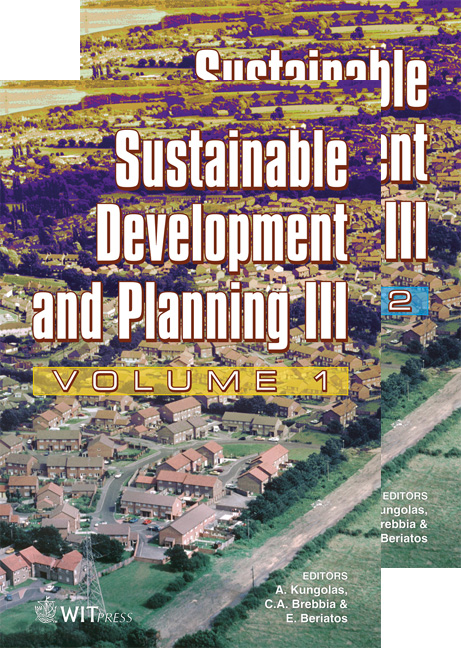Urban And Regional Typologies In Relation To Self-sufficiency Strategies
Price
Free (open access)
Transaction
Volume
102
Pages
11
Published
2007
Size
367 kb
Paper DOI
10.2495/SDP070061
Copyright
WIT Press
Author(s)
A. van Timmeren & L. C. Röling
Abstract
A topic of interest in sustainable urban planning and regeneration is the lack of integration of the ‘essential’ or ‘critical flows’ (water, energy, waste/wastewater). In the Netherlands the shortage of space within urban planning leads to a rising demand for multiple use of ground and the intensification, or ‘densification’, of existing city districts and neighbourhoods. This process of densification can be considered positive for urban areas with lower densities, for it can improve the quality of the urban area and can improve the environmental efficiency of the public services. However, existing city-parts, invisible infrastructures and social structures are being aggravated due to this intensification. Furthermore, less public open spaces are to be included in future designs concerning these areas. This is also due to cut backs in maintenance costs and disposal of existing dispersed and fragmented parts of ‘lost’ monofunctional areas. In summary, one can say that the ecological and spatial conditions in and around cities are under pressure: transportation distances grow, protection and qualities diminish, and (infra)structures get more complex, less robust and less visible. There is however a possibility to revalue the liveability and ecological quality of open space in and around cities. The use of decentralized systems at district or local scale could introduce new urban functions to mono-functional and diminishing (green) areas and options for selfsufficiency. This paper will focus on another background concerning urban planning based on ‘Decentralized Concentration’: The need for interconnection of essential urban infrastructures and ‘red/green functions’ based on another network philosophy and use, to achieve real (lasting) sustainable urban development. It focuses on network geometry and related backgrounds for design, integration and implementation of sustainable solutions concerning the essential flows at the scale of an urban district, a cluster of houses and individual houses. Keywords: urban typology, self-sufficiency, decentralization, energy and sanitation.
Keywords
urban typology, self-sufficiency, decentralization, energy and sanitation.





